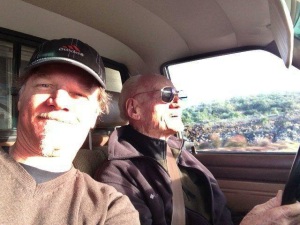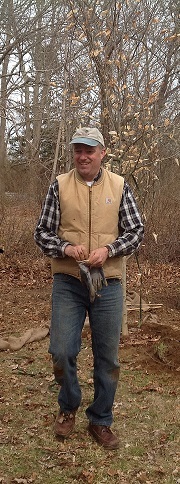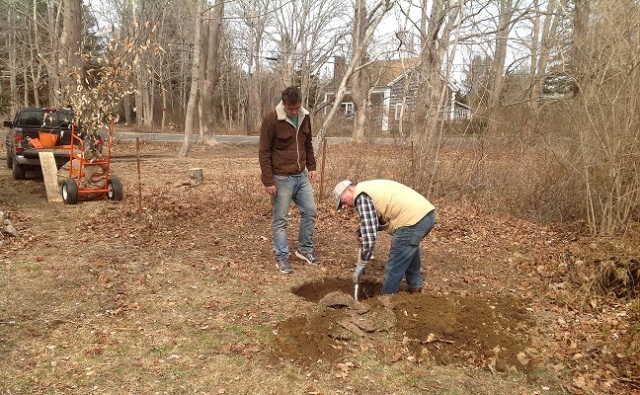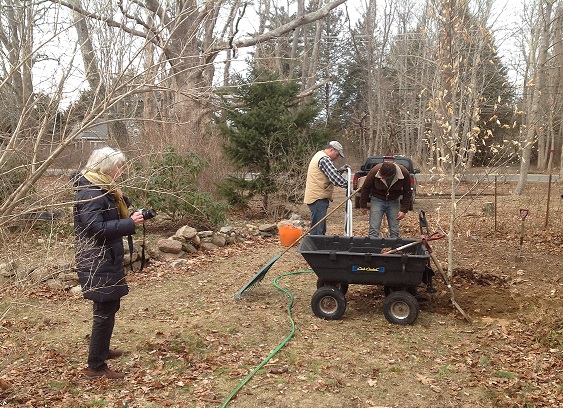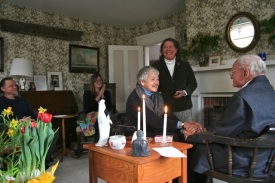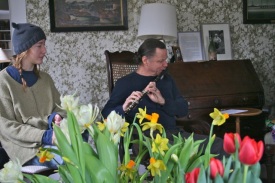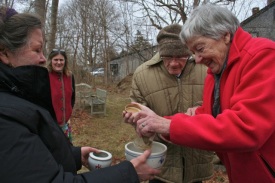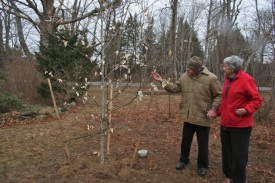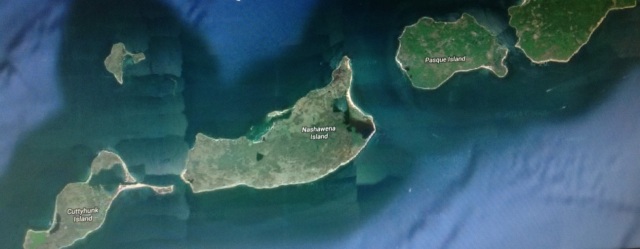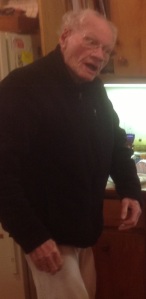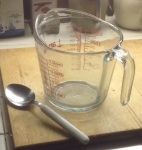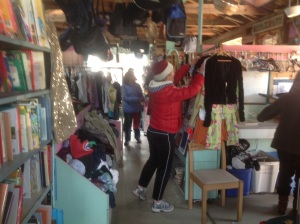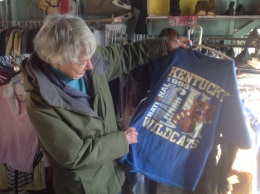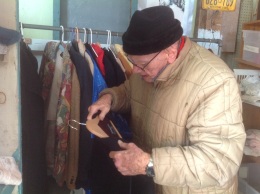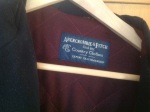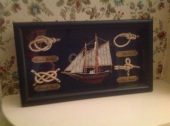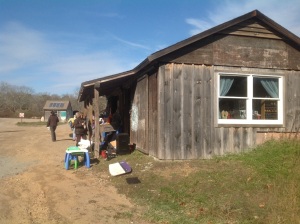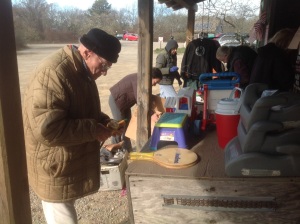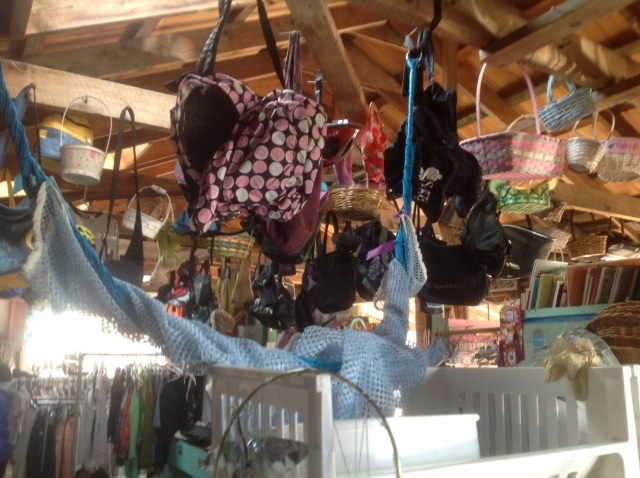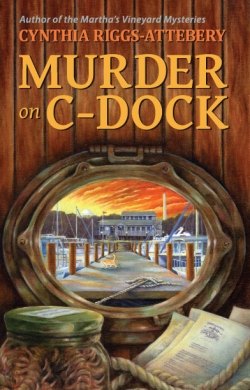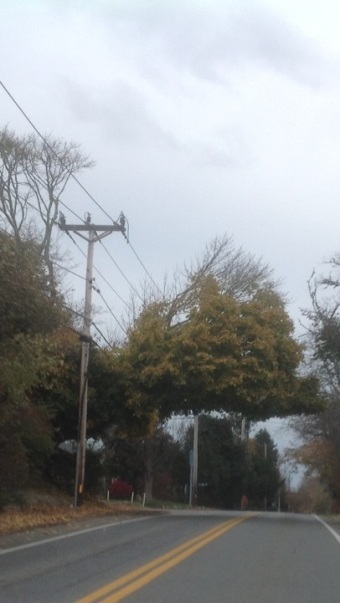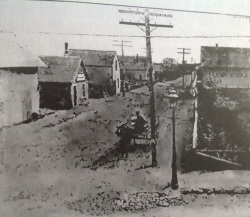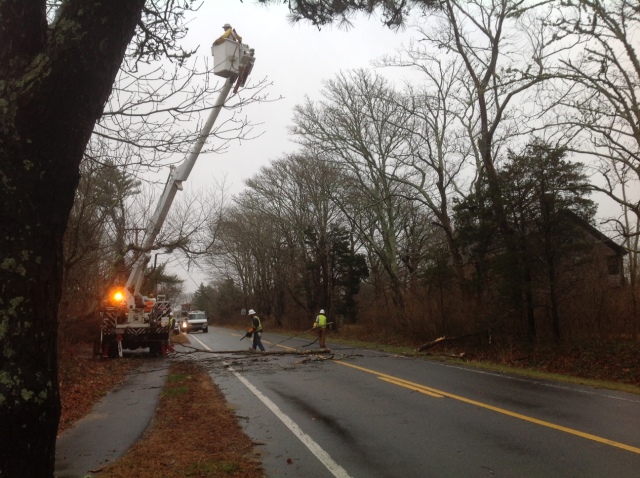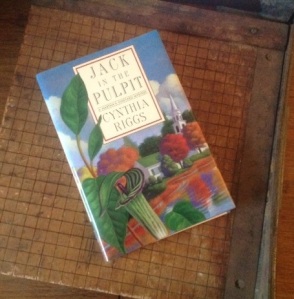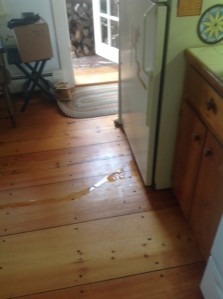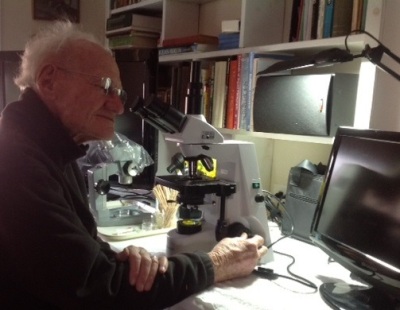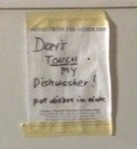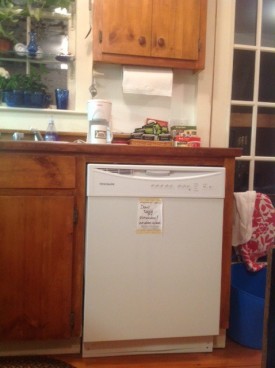Beech trees thrive on Martha’s Vineyard. In fall and winter, they color the woods with bright gold leaves, which they keep until spring, when new leaves push off the old.
Howie, a Buddhist, was still in San Diego when we decided we would plant a beech tree in our back yard to honor our union. Cat Finch of the Wednesday Writers agreed to join us in a Buddhist ceremony. She’d told us how beech trees have a special meaning in Buddhism because of their strength, beauty, and long life. Ancient societies called them “Mother of the Woods .”
By early March, Howie and his son Mark were on their way East, along with vials of water and soil from the Pacific Coast to add to water from the Atlantic and earth from my garden to nourish our yet-to-be-found tree. Howie was driving a 1986 Toyota truck with camper body. From my Island, I envisioned my Knight in shining armor and his Squire Mark, overcoming obstacles along I-70 before he could cross the four-mile-wide moat to get to his Lady Love in the Cleaveland House.
Groves of majestic beeches grew around ancient sites of power, where the trees provided easily split firewood and edible nuts and leaves. The leaves are said to be as sweet as mild cabbage but with a finer texture.
In mediaeval times, tablets of thinly sliced beechwood were used before paper was introduced. In fact, Old English boc and Norse bok mean both beech and book. Even in modern German, Buch means book, Buche means beech. Westphalian ham is smoked with beechwood fires. Beech chips still are used in the brewing of German smoked beer. Drums made of beechwood are supposed to have a tone between maple- and birch-wood drums. Beechwood was often substituted for walnut for the stocks of rifles.
Since we didn’t have a beech tree anywhere near our house, it became a matter of finding one. Howie and I figured we would be able to dig a small hole and plant a young tree, a foot or so tall, in it.
I asked Jonathan, a friend and neighbor who had beeches on his property, if we might have one of his trees. He scouted around and didn’t find one he thought would do. He knew we wanted a small, perfectly formed one, and he knew beeches are notoriously difficult to transplant. So he went to the director of the Polly Hill Arboretum, Tim Boland.
“Late March is the ideal time to plant a beech,” said Tim. “I’ll find a tree for them.”
Since Howie planned to arrive in late March, that would work. I dug a hole I thought would accommodate our foot-high tree when Tim brought it.
Tim called. “I found your tree and my son and I are bringing it over.”
Howie was still enroute.
Tim said, “Can we get our pickup up close to the hole?”
Pickup?
“I think between the two of us we can lift it out of the truck, but we won’t be able to carry it far.”
Two men?
The truck arrived, pulled off the Edgartown Road into our yard, and Tim and his six-foot-two son lifted the beech tree off the truck. It was twelve feet tall with a heavy root ball.
Tim scratched his head at the hole I’d dug. This was, after all, the Director of the Arboretum. “Got a shovel?”
He enlarged the hole to fit the tree and he and his son gently nudged it into its new home, packed sweet compost around its roots, and braced it with stakes against the north wind.
Howie and Mark arrived, after confronting more obstacles than expected. The dragons of yore didn’t compare with cross-country snow and vehicle breakdowns.
March on Martha’s Vineyard can be mild, but that year it was chilly, rainy, and raw. Cat performed our hand binding ceremony in front of the parlor fire. Mark and his family were present. Mark, a musician, had composed a piece he played on his flute. The Wednesday writers attended.
After the ceremony, we put on our foul weather gear and trudged out to our tree, poured the salt water from two oceans and soil from two gardens around it, and joined hands.

Wednesday Writers Cat Finch, Lisa Belcastro, and Amy Reece, with Howie and Cynthia, Lynn Christoffers photos
It’s been almost two years since Tim planted the tree. It has grown from an adolescent twelve-foot-tall sapling to a real tree, almost twenty feet high. From the kitchen window we can watch it change through the seasons, from its bright green spring foliage to rich green summer, and bright gold in fall. In winter, the gold leaves stand out among the gray trunks of oaks and maples. This past summer we watched from our swing as birds circled it, looking over the enticing branches as a possible nest site.
Apparently salt water from two oceans did no harm.
Helen of Troy was supposed to have carved her lover’s name on a beech. Jason used beech, not oak, when he built the Argo.
Beeches have a long life, three hundred years or more. When we pass the huge copper beech in North Tisbury, near Middletown Nursery, we think that’s how our tree will look, some two hundred years from now.
The beech tree we see from the kitchen and all it stands for is the legacy we will be leaving our grand- and great-grand and great-great grandchildren.
 BEECHES
BEECHES
By Our Door
If we were to be,
Like Baucis and Philemon
changed into trees
Could they be beech?
How lovely our spring
in pale green.
In summer how cool
with comforting shade
and the chirping of birds.
In autumn
a wealth of gold coins,
a rustle of silk
Strong boles and gray boughs would defy
the rough wind, and hold
winter-bronzed leaves to the sky.
— Dionis Coffin Riggs
♥ ♥ ♥



